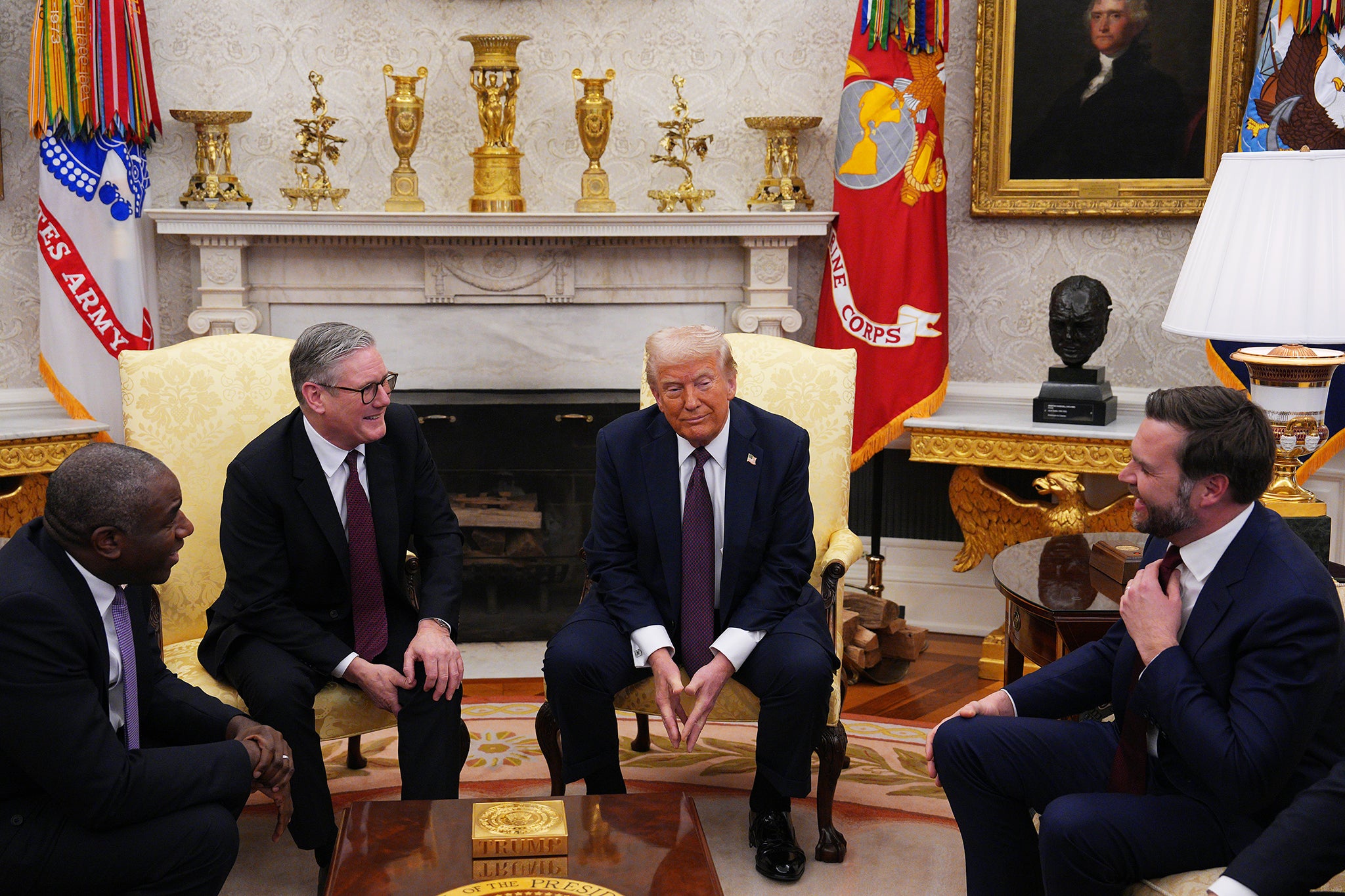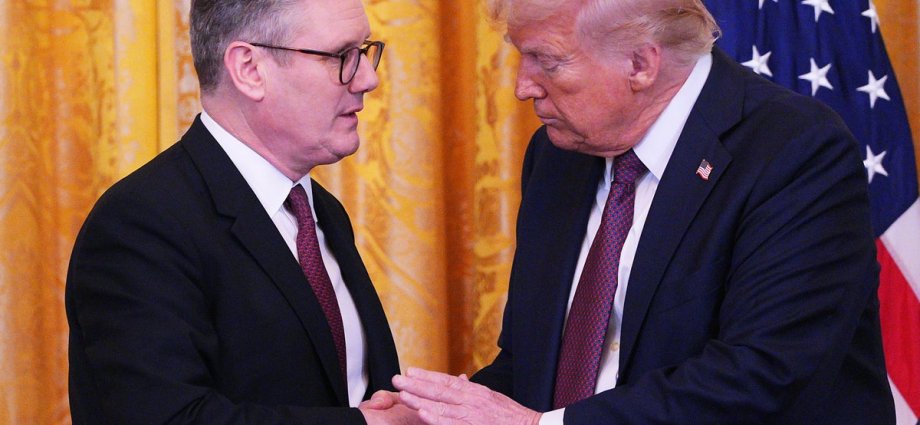The UK may be on the brink of agreeing a new trade deal with the US, after nearly five years of negotiations.
The previous government began discussions for a free trade agreement in May 2020, with then-President Joe Biden’s administration.
Now vice president JD Vance has said that there is a “good chance” a deal could be reached between the two countries, as the world reels from the global trade war prompted by Donald Trump’s tariffs.
The UK has received the lowest possible tariff rate, with 10 per cent taxes applied on exports to the United States, which Mr Vance has said was partly due to America’s “cultural affinity” with Britain.
What could a trade deal look like?
Sir Keir Starmer’s government has made no pretence over the fact it is not looking for a traditional comprehensive trade deal. Instead, it is pushing for an agreement based around the growth of “future” industries, such as biotech, new pharmaceuticals and artificial intelligence (AI).
The proposal is that the UK and US research base coupled with the money markets in New York and London would create a powerhouse for the latest industrial revolution, which could shape the future of the world.
The US largely embraces this idea but there are caveats and the negotiations have been complicated by President Trump’s tariffs.

While a final deal would see close integration for those future growth industries, it now would also mean deals on more traditional areas to remove tariffs altogether.
The biggest issue – as is often the case – will be how far it affects agriculture products. Mr Trump’s team would like the UK to allow chlorinated chicken or beef with added hormones. But the UK does not want to go this far.
There could also be demands for the UK to repeal legislation on tech controls, which the White House considers affects free speech.
In the end, the quick deal will be closer to the UK vision on future growth technologies but the ongoing question is how much Sir Keir will have to compromise in other areas.
What does the UK trade with the US?
The US continues to be Britain’s largest single-country trading partner, followed by Germany, the Netherlands, Ireland and France. As a bloc, trade with the EU is significantly higher.
The UK has nearly no trade imbalance with the US when it comes to goods, exporting £59.3bn and importing £57.2bn in 2024.
This has likely contributed to the fact that Britain has not been in Mr Trump’s firing range when it comes to extra tariffs; and why a trade deal is on the cards.
Currently, the UK is facing a 10 per cent tariff on all goods exported to the US.
British automotive and steel exports are taking a stronger blow, with a separate 25 per cent levy on sales to the US market.
Cars are Britain’s single largest export to the US, valued at £8.3bn in the year up to November 2024.
The US is also the top buyer of domestic cars, from Aston Martin to Mini; though British brand Jaguar Land Rover (JLR) is the most at risk from tariffs, with the US being its top sales market.
This has been a point of tension between Sir Keir and Mr Trump, as negotiations to exempt the UK from these industry-specific tariffs have so far fallen short.
Other industrial exports are also high on the list, with £5.3bn in mechanical power generators and £2.3bn in aircrafts sent to the US last year.
Meanwhile the UK’s health and scientific industries are also reliant on the US market.
The UK sent vaccines, medicines and other pharmaceutical products worth £7.3bn to the US last year, and £2.4bn in scientific instruments like microscopes and X-ray equipment.
Britain buys billion in medical and pharmaceutical products from the US, too, meaning that both industries are significantly intertwined; with Health Secretary Wes Streeting warning that tariffs could pose challenges.

The UK only imports around £100 million in animal products from the US, a point of contention for Mr Trump, who has urged Britons to buy more chlorinated and hormone-treated animal products such as beef and chicken.
Meanwhile, crude oil is Britain’s leading import from the US, at £8.6bn in the 12 months up to November 2024.
President Trump has suggested in the past that buying more American oil and gas could be a way to curry favour in the global trade war.
Tech at the heart of UK-US trade future
Services are perhaps the most significant element of UK-US trade, representing some £179bn in services exchanged between the two countries.
The UK benefits from an open relationship with the US, exporting twice as many services (£124bn) as it imports (£55bn).
This includes £52.3bn across various business services, £27.8bn in financial services, and £11bn in insurance and pensions.
Perhaps most importantly with regards to the new trade deal, the UK exports £10.3bn in telecoms, tech and IT services across the pond; and imported £3.5bn last year.
The tech industry – in particular AI, biotech and quantum – is on the agenda for UK-US negotiations, as both sides seek to deepen their ties in so-called “future industries”.
On a visit to California last month, UK technology secretary Peter Kyle met with US tech leaders including Open AI, Anthropic and Nvidia, touting Britain as a global hub for AI investment.

Both countries have been aligned on tech for some time and have expressed their intentions to steamroll ahead on AI.
In February, both the UK and US refused to sign an international agreement on AI, which aimed to make development “open”, “inclusive”, and “ethical”.
While the UK cited national security concerns, the US said that overregulation would “kill a transformative industry”.
Less than one year earlier, both countries – under different governments – had announced a partnership on AI safety.











